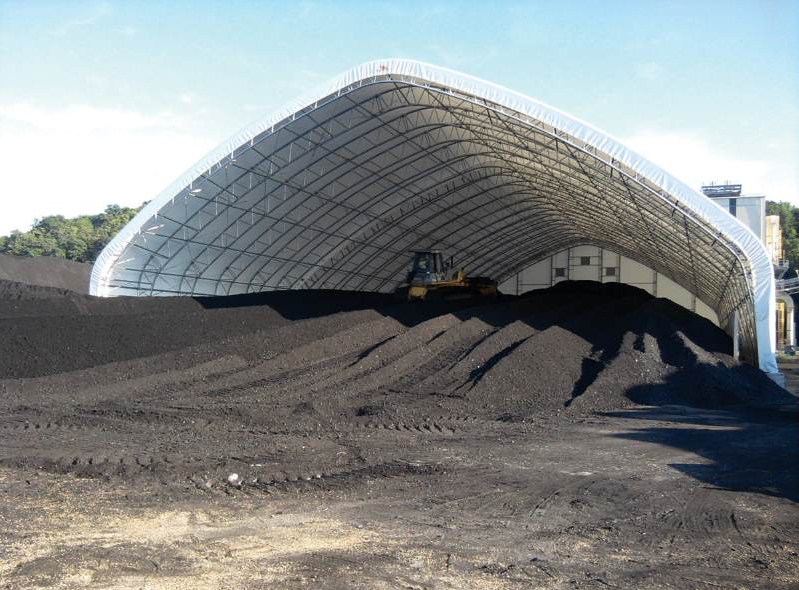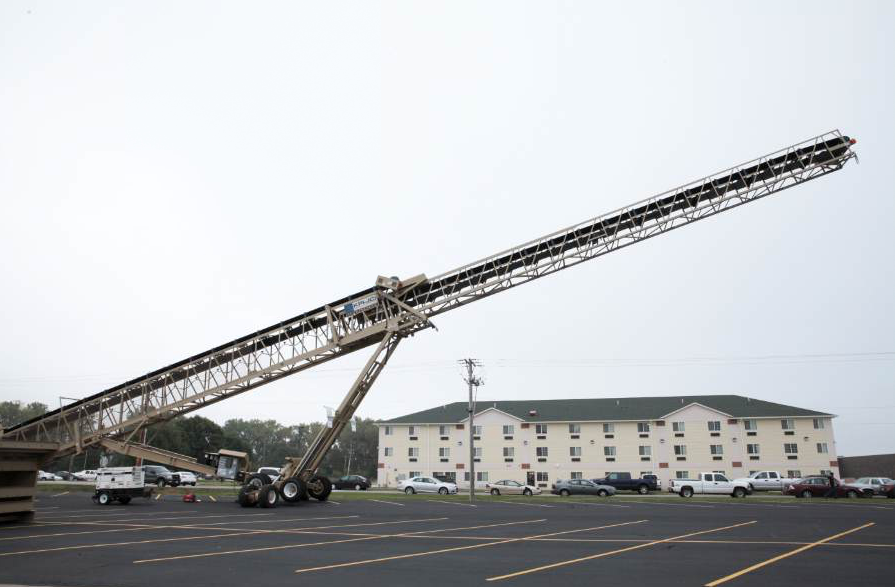Find Profit in Recycle Material Management
BY Sandy Lender

No recycling issue would be complete without discussing the management of materials. Let’s get back to basics with the concept of proper stockpiling of virgin and recycle materials. This may serve as a refresher course for some managers; it will hold nuggets of cost-saving information for new materials managers. Either way, whether you’re dumping millings from haul trucks, discharging RAP from a screening plant or building stockpiles with stacking conveyors, each owner must keep an eye on minimizing costs. Recycled asphalt pavement (RAP) enters state mixes at varying percentages depending on the course level and the DOT’s comfort level, requiring an increased need for RAP bins, RAP feeders, RAP weighing and RAP stockpile management at the asphalt plant.
Consider the following list of expenses for virgin material stockpiling:
- fuel costs for trucks and loaders
- maintenance costs for equipment
- materials costs for spilled and wasted material
- drying time and costs
- original equipment investment
- MSHA fines for safety violations
Of course the list goes on. Myriad factors affect materials costs when it comes to the stockpile, and those factors apply to both virgin and RAP piles. A good place to start, as always, is with safety, and that can start with stockpile placement. From there, building a stockpile with good capacity helps maintain good profit margins.
Place Piles for Safety
For many aggregate suppliers, as well as long-time asphalt producers, established virgin aggregate stockpiles exist in designated areas around the site. The savvy owner may have had the foresight to slope the area to facilitate drainage, thus reducing drying times and costs. Perhaps he has paved the area where piles are located to prevent contamination and sinking, and to assist in drainage. By designating areas for these stockpiles, the owner can provide signage that eliminates confusion for loader and haul truck operators. This helps prevent mix contamination.
Often, strategically placing the stockpiles between the plant and concerned neighbors presents a sound barrier to keep the noise of daily operations from drifting into new neighborhoods. Many producers elect to place their least-used materials furthest from the plant and closest to the edge of their property in an effort to cut down on equipment-operation noise, as well.
By planning the placement of material piles, aggregate suppliers and plant owners have the opportunity to map out where stockpiles will be in relation to power lines as well. The Mine Safety and Health Administration (MSHA) requires a clearance of at least 10 feet from the apex of the stockpile and live power lines. When it’s time to add aggregate sizes or RAP to production, wise plant managers will consider placement of the new material carefully. It makes perfect sense to place the material in line with the other stockpiles if there’s room where they’re located. But check the following items:
- Are there live power lines in the vicinity?
- What is the height of those lines at their lowest points, and how high can the piles be built while remaining outside danger zones?
- Are all personnel, including loader and truck operators, aware of the height restrictions of the new stockpiles?
- Is the area beneath the new stockpile paved—or will it be paved before building?
- Which direction does the ground beneath the new stockpiles slope? (Does it slope toward other piles, or do the other piles drain in the direction of this new pile? How is that going to affect drying times for this new material?)
- Is the proper signage ready for the new material, and are all plant personnel aware of the new material’s arrival?
As piles are built, operators must heed a plethora of rules and regulations to stay safe, including creating berms as the stockpile grows in height. Researchers at Superior Industries, Morris, Minnesota, state that it takes a great deal of time, labor and equipment to berm a stockpile that is 200 feet by 300 feet, but that is what is required to allow access to the top of the pile safely.
“With traditional truck stockpiling methods,” Superior Industries reports, “MSHA requires that the stockpile must be bermed at the upper perimeter to the height of the [truck] axle. MSHA statistics show that there are several hundred accidents a year regarding trucks turning over on top of stockpiles.”
Get Profitable
Superior Industries is an equipment manufacturer that produces and sells radial stacking conveyors that take the truck-and-loader method of stockpiling out of the picture. Use of crushing or screening plants with discharge conveyors, or automated conveyor systems such as Superior’s TeleStacker product, present options for producers looking for a way to reduce the time spent on building berms and worrying about rollover accidents. For the producer not ready to invest that money, berms are a necessary part of getting height.
Often, with height comes compaction of material as machines drive up and down the sides of stockpiles. Of course, compaction due to rain can’t be avoided unless the producer has tarped the stockpiles and has condensation to overcome. But compaction in the stockpile for any reason can affect materials costs. The researchers at Superior Industries give an example based on their estimated percent of compaction from using truck stockpiling methods.
“If a stockpile is 45 percent compacted, that same percentage is subtracted from any profit.”
Their example is that using scrapers or trucks compacts the stockpile with every lift.
Without compaction, producers can estimate stockpile capacities based on conveyor length, stockpile height and stockpile configuration, according to Superior Industries. “A good rule of thumb to remember is that at an 18- to 20-degree incline, a conveyor discharge height is approximately one-third of the conveyor length. So, for example, a 90-foot conveyor at 18 degrees has about a 30-foot discharge height.”
Superior Industries researchers have figured out that a 90-degree radial stockpile contains about four times the material that a conical stockpile of the same height contains (See Table 1). The example their researchers gives is, “A conical stockpile built with a 50-foot conveyor holds approximately 500 tons, while a 90-degree radial stockpile built with a 50-foot conveyor holds 2,000 tons.” The size of the radial stockpile’s footprint is not provided, but its propensity for compaction is low due to the nature of the radial stacking method.
Both virgin and RAP materials can be stockpiled in the same manner, thus using radial stockpiling techniques for the RAP stockpile would permit the same increase in capacity.

The SuperStacker® telescoping radial stacker from KPI-JCI and Astec Mobile Screens, is designed to allow producers up to 30 percent more stockpile capacity than traditional stackers, while its patented Wizard Touch™ automation system builds custom-desegregated stockpiles. Photo courtesy KPI-JCI.
RAP it Up
As with most plant systems, stockpiling has the option of automation. The margin for error and room for accidents have been lessened with this technology. For those not ready to make that investment, the traditional method of moving material with trucks and manipulating it with loaders to get the stockpiles up to proper height presents the same safety and profit challenges producers are used to facing. With the higher percentages of RAP in state mixes and the obvious cost-effectiveness of using it in commercial mixes, adding a couple RAP piles to the production process brings the challenges to the forefront of producers’ minds. When industry experiences increases in RAP bin and piles at plant sites, it’s time to consider where those piles can be placed, how to place them safely, and how to build them for maximum profit margins.
Table 1. Approximate Capacities of Stockpiles
The capacities figured here represent typical aggregate material with a 37-degree repose angle and a bulk density of 100 pounds per cubic foot.
Conveyor length (feet) Conical stockpile capacity (ton) 90-degree stockpile capacity (ton)
50 500 2,000
60 800 3,200
80 2,000 8,000
95 3,000 12,000
110 4,000 16,000
125 6,000 24,000
150 10,000 40,000
Source: Superior Industries, Morris, Minnesota
